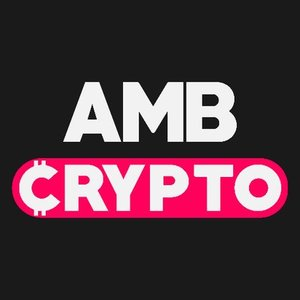Market Pulse
ZKsync, a prominent Ethereum Layer 2 scaling solution leveraging zero-knowledge (ZK) rollup technology, has unveiled its ambitious “Atlas” upgrade. This strategic enhancement is specifically engineered to cater to the rigorous demands of enterprise-grade blockchain users, signaling a pivotal moment for ZKsync. By bolstering its capabilities in areas critical to large-scale businesses, Atlas aims to bridge the chasm between traditional corporate infrastructure and the burgeoning decentralized web, potentially unlocking new frontiers for institutional engagement with blockchain technology.
The Atlas Upgrade: A Leap Towards Enterprise Readiness
The Atlas upgrade is far more than a mere technical iteration; it embodies a comprehensive strategic shift designed to elevate ZKsync’s appeal to institutional clients. This significant development meticulously addresses key enterprise requirements: enhanced privacy, superior operational performance, and predictable cost efficiency. By refining its core architectural framework, ZKsync is directly tackling the prevalent corporate concerns surrounding public blockchain limitations, such as data confidentiality, regulatory compliance, and transactional throughput.
- Improved Transaction Throughput: Atlas optimizes the processing of transactions, enabling significantly higher volumes and faster finality, which are crucial metrics for efficient business operations.
- Enhanced Privacy Features: While ZK-rollups inherently offer privacy benefits, Atlas refines these to meet specific corporate compliance protocols and ensure robust data segregation.
- Predictable Gas Fees: Enterprises necessitate stable and predictable operational costs. Atlas aims to provide a more consistent fee structure, effectively mitigating the volatility concerns often associated with public blockchains.
- Robust Security Framework: Leveraging Ethereum’s foundational security, Atlas introduces further comprehensive enhancements to safeguard sensitive enterprise data and valuable digital assets.
Why Enterprises are Looking to ZKsync
Traditional businesses are increasingly exploring blockchain technology for diverse applications, ranging from sophisticated supply chain management to the intricate tokenization of digital assets. However, perceived complexities and the inherent limitations of earlier blockchain iterations have historically acted as significant deterrents. ZKsync’s Atlas upgrade directly targets these pain points by presenting a compelling value proposition. Its zero-knowledge technology enables verifiable computations without exposing underlying confidential data, a feature highly desirable across industries handling sensitive information, including finance, healthcare, and complex logistics.
The unique ability to maintain data privacy while simultaneously ensuring transparent and immutable record-keeping represents a powerful combination for businesses. Enterprises can strategically leverage ZKsync for:
- Executing private financial settlements among consortiums without public disclosure.
- Implementing secure and scalable supply chain tracking solutions without compromising proprietary business data.
- Facilitating the issuance and management of tokenized real-world assets (RWAs) with built-in regulatory compliance.
- Deploying high-performance decentralized applications (dApps) that demand high throughput and minimal latency.
This strategic pivot positions ZKsync not merely as an Ethereum scaling solution, but as a potential foundational backbone for the next generation of enterprise-grade decentralized applications.
Impact on the Broader Web3 Ecosystem
ZKsync’s proactive move into the enterprise sector with its Atlas upgrade could instigate significant ripple effects across the entire Web3 landscape. It serves as a strong signal of the growing maturity within Layer 2 solutions, demonstrating their expanded capacity to serve beyond traditional retail DeFi and NFT markets. Should this initiative prove successful, it could substantially accelerate the institutional adoption of Ethereum-based technologies, thereby validating the broader rollup-centric roadmap. Consequently, other Layer 2 protocols might emulate this strategy, intensifying competition to offer advanced enterprise-grade features and pushing the boundaries of innovation further.
This development also underscores a broader, transformative trend where blockchain technology is transitioning from niche applications to mainstream business integration. As more traditional corporations explore the vast potential of tokenization, verifiable digital identities, and secure data exchange, robust, scalable, and inherently private Layer 2 solutions like ZKsync are becoming indispensable infrastructure for the digital economy.
Conclusion
The ZKsync Atlas upgrade represents a meticulously calculated and profoundly significant step towards solidifying its position as a premier Layer 2 solution for enterprise adoption. By directly addressing the core exigencies of businesses—namely, data privacy, uncompromised performance, and financial predictability—ZKsync is actively constructing the pathway for a new era of institutional engagement with cutting-edge blockchain technology. This acute strategic focus not only fortifies ZKsync’s competitive standing but also acts as a potent indicator of the evolving landscape where Web3 technologies are increasingly poised to revolutionize and integrate with traditional industries. The eventual success and impact of Atlas will undoubtedly be closely observed as a critical benchmark for enterprise-grade scalability within the rapidly expanding decentralized world.
Pros (Bullish Points)
- Positions ZKsync as a frontrunner for institutional and enterprise blockchain solutions, potentially driving significant adoption.
- Enhances the utility and perceived reliability of ZK-rollup technology, potentially attracting more capital and development to the L2 ecosystem.
Cons (Bearish Points)
- Enterprise adoption cycles are notoriously long, meaning the full impact and benefits may take time to materialize.
- Competition in the Layer 2 space is fierce, and other protocols are also vying for enterprise clients, creating an uncertain competitive landscape.



